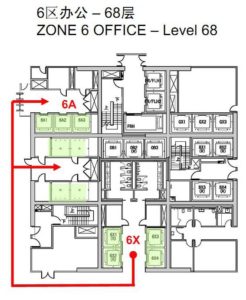Professor Hermann Simon (founder of Simon Kucher and Associates), who coined the term ‘Hidden Champions’ for medium-sized businesses that dominate their niche, shared an interesting observation at a recent talk in Shanghai. He noted that avoiding over-staffing and instead applying a bit of under-staffing can be an enormous productivity driver.
We recommend taking a similar approach towards commercial and industrial real estate: acquire additional space only when your operations truly need it, and either get rid of or find new uses for space that isn’t being used. Why?
Excess space impedes success
Underutilized space can reduce a firm’s profitability and endanger its viability – sometimes in subtle ways that management fails to notice. This holds for any type of business property – production spaces, warehouses, offices and retail.
The many direct and indirect ways that holding underutilized real estate hurts a firm’s bottom line include:
- unnecessarily high real estate costs
- exorbitant facility management fees
- slower operations
- a tendency to store inappropriate amounts of stock
- an atmosphere of inefficiency that contributes to productivity decline
- increased liability and insurance costs
While the direct costs of renting or financing underutilized space may be bearable when business is good, the total cost accumulation may become unbearable when the economic cycle turns south.

Waging war against underutilized space
A need for new real estate tends to announce itself loudly: your firm is launching a new product, or just won a big new client, and the need for new space for additional employees and machines is urgent and obvious.
But opportunities for gaining back existing space from underutilized operations do not announce themselves. Instead, they have to be identified and handled proactively.
Ways to utilize existing space better include:
- removing items that haven’t been used in over a year
- exploring desk-sharing for team members that spend less than 50% of their time in the office
- outsourcing noncritical and low-value production steps to a supplier
- keeping less stock of raw materials
- getting completed goods out to customers quicker
- organizing workflows more efficiently
If your company has excess space, then increasing operational and financial efficiency by subletting it may be a good option. Every business has different needs, and what for your firm may be a vacant land plot for potential expansion may for another function as a valuable storage area.
It’s not simply about generating a few additional dollars in rental income, but about creating a more productive and profitable operation overall. Perhaps it is best to think of underutilized spaces as opportunities to be discovered and exploited – little gold nuggets with potential to enrich your business.





